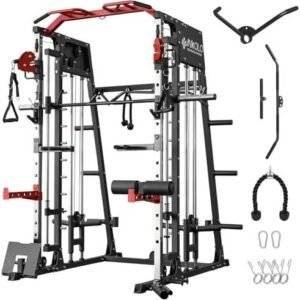Living with chronic pain can feel like an intricate dance with your body—one that often leaves you feeling frustrated, isolated, and exhausted. Whether it’s the dull ache of arthritis, the sharp stings of fibromyalgia, or the relentless grip of back pain, the challenges can seem overwhelming. But amidst this struggle, there is a path forward that can bring a sense of relief, empowerment, and even joy: gentle fitness. In this article, we will explore how incorporating gentle movements and mindful exercises can help soothe your body, alleviate pain, and restore your sense of connection with yourself. We’ll share practical tips, inspiring stories, and gentle fitness practices that honor your unique experience, so you can discover activities that make your body feel good rather than pushing it into discomfort. Join us on this journey to find more comfort in movement and renewed strength in vulnerability. You are not alone, and together, we can uncover a healthier relationship with pain and physical activity.
Table of Contents
- Understanding Chronic Pain and Its Impact on Daily Life
- The Benefits of Gentle Fitness for Pain Management
- Practical Exercises to Incorporate into Your Routine
- Building a Supportive Community for Your Journey
- Future Outlook
Understanding Chronic Pain and Its Impact on Daily Life
Chronic pain can reshape the very fabric of daily life, often transforming simple tasks into daunting challenges. Whether it manifests as persistent aches, sharp sensations, or relentless fatigue, it can lead to a range of emotional responses, including frustration and isolation. Individuals living with chronic pain may experience limitations that affect not only their physical activities but also social interactions and mental well-being. Understanding these impacts is crucial, as it allows individuals to adopt strategies to reclaim a sense of normalcy and control.
In the pursuit of relief, gentle fitness offers a beacon of hope for many dealing with chronic pain. Engaging in low-impact exercises helps improve mobility, build strength, and enhance emotional resilience. Consider these gentle fitness options that can be tailored to individual capabilities:
- Yoga: Enhances flexibility and promotes relaxation.
- Swimming: Provides a supportive environment to reduce strain on joints.
- Walking: Simple yet effective, can be adjusted to pace and distance.
- Stretching: Helps alleviate tension and improve range of motion.
Incorporating these activities into a daily routine can gradually help individuals regain their confidence and improve their quality of life. It is essential to listen to one’s body and progress at a comfortable pace to avoid exacerbating pain. Below is a sample weekly activity plan, illustrating a balanced approach to managing pain through gentle fitness:
| Day | Activity | Duration |
|---|---|---|
| Monday | Gentle Yoga | 30 minutes |
| Tuesday | Walking | 20 minutes |
| Wednesday | Stretching | 15 minutes |
| Thursday | Swimming | 30 minutes |
| Friday | Rest Day | N/A |
| Saturday | Gentle Yoga | 30 minutes |
| Sunday | Walking | 20 minutes |
The Benefits of Gentle Fitness for Pain Management
Embracing a gentle fitness routine can be a transformative experience for those navigating the complexities of chronic pain. Unlike high-intensity workouts, gentle fitness encourages movement without overwhelming the body. This approach can offer several advantages:
- Reduced Stress on Joints: Low-impact exercises, such as swimming and yoga, minimize strain, making them ideal for individuals with joint pain.
- Improved Range of Motion: Gentle stretches and movements help maintain flexibility, preventing stiffness and enhancing mobility.
- Enhanced Mood: Physical activity releases endorphins, the body’s natural pain relievers, fostering a positive mindset.
Moreover, gentle fitness promotes an integral connection between mind and body. Meditation and breathwork, often incorporated into gentle fitness practices, provide tools for managing pain perception. Many practitioners find relief through mindful movement, leading to:
- Heightened Body Awareness: Listening to the body’s signals encourages a deeper understanding of pain triggers.
- Better Sleep Quality: Regular gentle activity can alleviate anxiety and improve sleep patterns, which are often disrupted by chronic pain.
- Community Support: Gentle fitness classes create supportive environments where individuals can share experiences and coping strategies.
Practical Exercises to Incorporate into Your Routine
Incorporating gentle fitness into your daily routine can significantly aid in managing chronic pain. Experiment with simple movements that promote flexibility and build strength without overwhelming your body. Consider the following activities:
- Mindful Stretching: Set aside 10-15 minutes each day to engage in slow, deliberate stretches. Focus on breathing deeply and tuning into areas of tension.
- Water Aerobics: If possible, join a local class or swim on your own. The buoyancy of water helps alleviate joint strain while providing resistance to enhance muscle strength.
- Yoga or Tai Chi: Look for beginner classes that emphasize gentle movements and relaxation techniques. These practices can improve balance and relieve stress.
To further personalize your routine, consider keeping a pain journal to track your activities and their effects. This can help you identify which exercises work best for your body. Here’s a simple table to help you structure your weekly routine:
| Day | Activity | Duration |
|---|---|---|
| Monday | Gentle Yoga | 30 Minutes |
| Wednesday | Water Aerobics | 45 Minutes |
| Friday | Mindful Stretching | 20 Minutes |
Building a Supportive Community for Your Journey
Embarking on the path to managing chronic pain can feel isolating, but surrounding yourself with a nurturing community can make a significant difference in your journey. Connecting with others who understand your struggles fosters a sense of belonging. Sharing experiences and wisdom can empower you and remind you that you are not alone. Look for local support groups or online forums where you can:
- Exchange tips and resources related to gentle fitness techniques.
- Discuss emotional impacts and coping strategies for living with chronic pain.
- Participate in group activities that prioritize movement without strain.
Creating a supportive atmosphere is equally important; consider hosting or organizing community meet-ups or virtual classes focused on gentle fitness. Building these connections allows everyone to engage and support each other uniquely. You might even find that forming partnerships for accountability encourages you to stay committed to your goals. Here’s a simple way to structure a community calendar to keep everyone informed and involved:
| Date | Activity | Notes |
|---|---|---|
| 1st Monday | Gentle Yoga Class | Online via Zoom |
| 2nd Wednesday | Walking Group | Meet at the park |
| 3rd Friday | Nutrition Workshop | Registration required |
Future Outlook
As we conclude this exploration into the world of gentle fitness for managing chronic pain, it’s essential to remember that you are not alone on this journey. Each step towards relief, however small, is a testament to your resilience and courage. Embracing gentle movement can open doors to not just physical ease, but emotional relief and a deeper connection to your body.
It’s important to approach this process with kindness—toward yourself and your healing. Always listen to what your body is telling you, and don’t hesitate to seek support from professionals or a community that understands your struggles. Remember, what works for one person may not work for another, and that’s okay. The goal is to find a rhythm that suits you, allowing for gradual progress and, most importantly, compassion for yourself.
Take a moment to celebrate each achievement, no matter how small, and know that finding relief from chronic pain is a journey, not a destination. Here’s to a future filled with movement that feels good, days that are brighter, and a deeper appreciation for the body’s ability to adapt and heal. We’re rooting for you every step of the way. Until next time, take care of yourself and keep moving gently forward.





